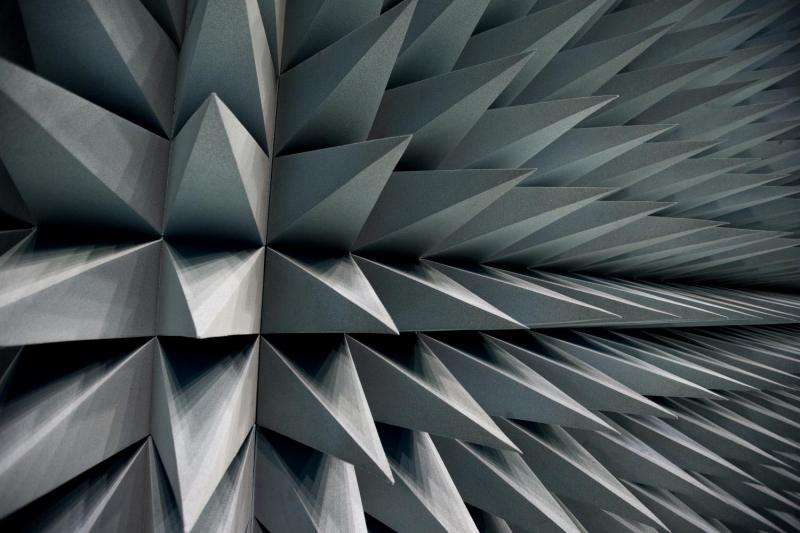Image: Anechoic foam covering to simulate the endless void of space

These spiky foam wedges, seen here in ESA's Maxwell test chamber, cover the walls of facilities that simulate the endless void of space.
This 'anechoic' foam absorbs radio signals, enabling radio-frequency testing without any distorting reflections from the chamber walls. In addition, it also absorbs sound – making these chambers eerily quiet places to work.
The Maxwell test chamber – part of ESA's ESTEC test centre in Noordwijk, the Netherlands – performs electromagnetic compatibility testing, ensuring all systems aboard a satellite can operate together without harmful interference.
Maxwell's metal walls form a 'Faraday cage', screening out all external electromagnetic energy such as TV broadcasts and mobile phone signals.
ESTEC's dedicated antenna test facilities – comprising the Hertz chamber for full satellites and the smaller Compact Antenna Test Range for antennas – are similarly fitted with metal walls and lined with anechoic foam.
Provided by European Space Agency





















